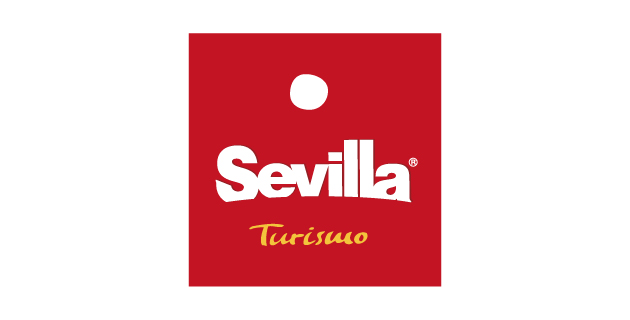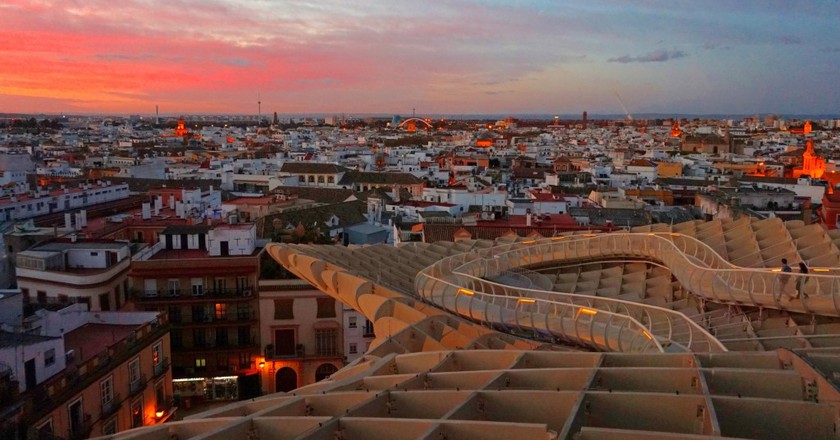Explore Seville
Seville’s motto is “No me ha dejado”—“It has not forsaken me”. Hinting as it does at the captivating effect this city has on all who visit it, it couldn’t be more appropriate for the Andalusian capital. Here are six reasons why Seville should be on everyone’s bucket list.
The cathedral
Even if you usually have to be dragged to look at things like churches and cathedrals, Seville’s is likely to amaze you with its size alone: it is the largest Gothic cathedral and third largest church in the world. Construction of this sprawling Gothic complex, which houses 80 chapels and has the longest central nave in Spain, began in 1401 on the site of the city’s former mosque. Work continued for over a hundred years, and in 1507 the cathedral was finally completed, having quite spectacularly succeeded in fulfilling the design team’s original aim to make something “so beautiful and so magnificent that those who see it will think we are mad”. Its iconic Giralda bell tower was formerly the mosque’s minaret and is all that remains of the Islamic structure that preceded the cathedral.
The Royal Alcázar Palace
A trip to Seville’s Royal Alcázar Palace is a must for fans of Mudéjar architecture — the name given to a blend of Moorish and Renaissance styles that is found in many of the Andalusian capital’s great monuments. The Alcázar, though, is the most impressive of them all. Work on this great palace began in the 10th century and continued, on and off, until the 19th century, resulting in a structure that showcases an intriguing mix of Moorish and Mudéjar architecture, with the latter style being particularly notable in the archways of the Alcázar’s elegant internal courtyards. Indeed, the interiors of this beautiful building match anything you’ll see in Granada’s Alhambra.
Santa Cruz
The old Jewish quarter of Seville has not changed much over the past few centuries (like Triana) and should be one of the first areas you explore when visiting here. It was into Santa Cruz that Ferdinand III banished the city’s Jewish population when he took Seville from the Moors in 1248; and brutal though the King undoubtedly was, one can’t help feeling, wandering around this maze of colourful houses and winding, cobbled streets, that there could have been worse places in which to be confined. Discovering Santa Cruz’s secret little squares and alleyways is a great way to spend a few hours in Seville, all the more so because the area is packed with traditional tapas joints where you can sample local specialities like stewed bull’s tail and pork in whisky sauce. It’s also a great place to check out flamenco, with the superb Museo Baile Flamenco (Flamenco Dance Museum) offering a fascinating exposition of the art’s complex history and nightly shows featuring some of Andalusia’s top performers.
The banks of the Guadalquivir
Flowing through the middle of Seville is the distinctively-green Guadalquivir river, which is now spanned by several ornate bridges connecting the city’s two halves. Seville owes a great deal to the murky waters of the Guadalquivir; flowing out into the Atlantic through the Bay of Cádiz, it gave the city a trading monopoly with the New World after its discovery by Christopher Columbus in 1492. Riches from the Americas poured into Seville and the city became enormously wealthy and powerful as a result. On sunny weekends (and there are great deal of them here), the lush banks of this great river are crowded with locals enjoying an activity named botellón, in which they carry their own booze down to the river and enjoy spontaneous, open-aired house parties. Blending in among them and indulging in your own riverside botellón is a great way to spend an afternoon in Seville, not least because it enables you to escape the ferocious heat and big crowds of the city centre.
Triana
There are no shortage of neighbourhoods in Andalusia where time stands to have stood still; barrios in which the homogenising trends of modernity have failed to take hold. One of the most enchanting of them all is Triana, the former gypsy quarter of Seville sitting on the other side of the river from the historic city centre. Many great flamenco artists and bullfighters have come from its attractive yellow and white-fronted houses, which are decorated with the pretty tile mosaics for which Triana is famous; indeed, as you arrive here via the Isabel II bridge, you are greeted by a statue of Juan Belmonte, the Triana-born matador said to be the greatest of the 20th century. Triana is also packed with traditional tapas bars—kitted out with the mandatory mounted bulls’ heads, bullfighting posters and pictures of a weeping Virgin Mary—offering insanely cheap drinks and snacks, meaning you can keep yourself well-refreshed whilst exploring this unforgettable neighbourhood.
Watch the sunset from Las Setas
Central Seville can be a confusing place to navigate, but one landmark you can always use to orientate yourself is Las Setas (The Mushrooms). This distinctive structure, built between 2005 and 2011 over Roman remains discovered during its construction, is the largest wooden monument in the world and dominates the once run-down Plaza de la Encarnación in the centre of historic Seville. On its lower level you can view the Roman remains over which its canopies tower and on top there is a walkway offering stunning panoramic views of the Andalusian capital. This is without doubt the best spot in the city to head for the sunset, when you can watch the light fade over the rooftops of Santa Cruz as you sip from the glass of fizz that’s included in the price of your ticket: the perfect finale for any visit to Seville.
The Seville Tourist Board has an excellent website full of ideas and information for you to make the most of your stay in Seville http://www.visitasevilla.es/en



